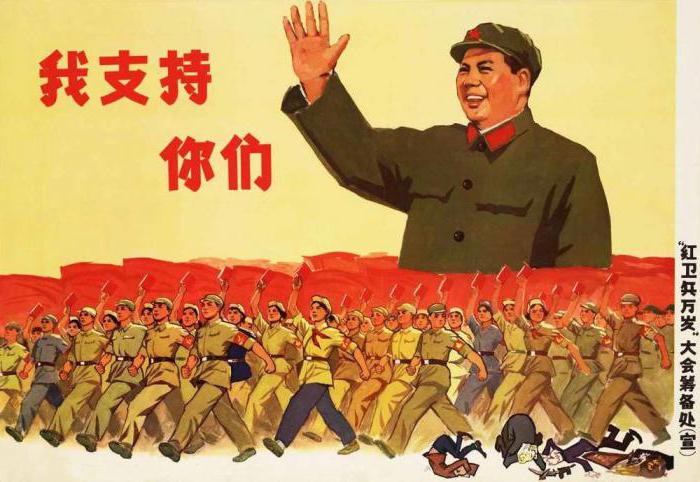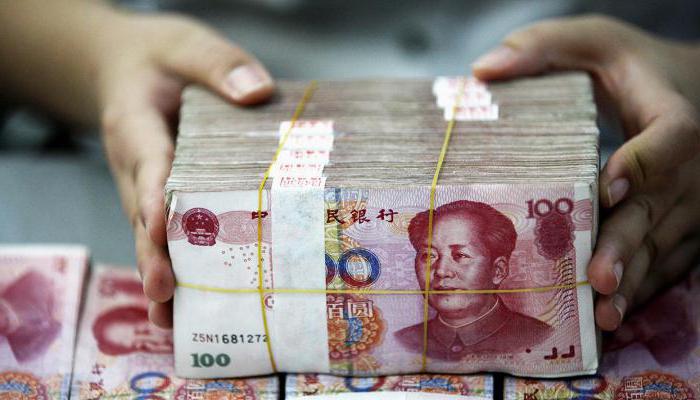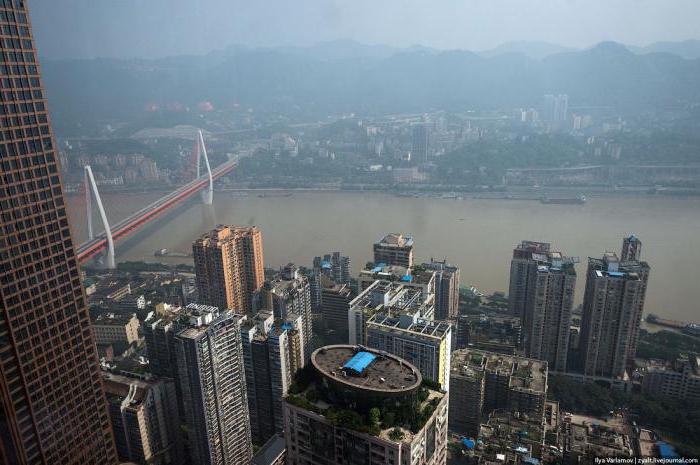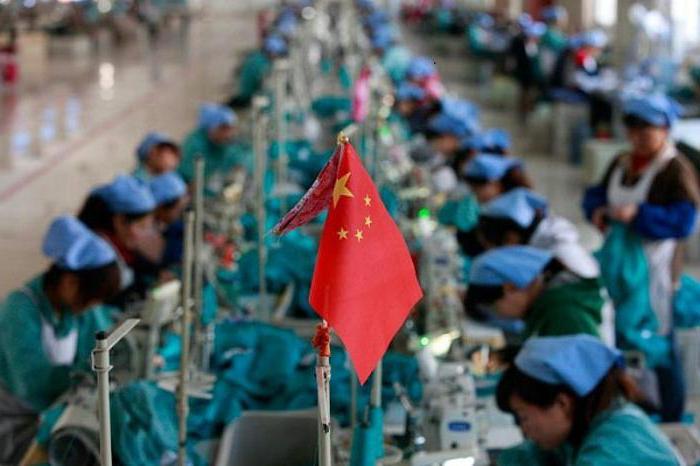The practice of creating free economic zones in China totals about thirty years. In many respects, it was these formations that allowed the state to take the second place (after the United States of America) in terms of nominal gross domestic product and to become one of the leaders in purchasing power parity. It is not surprising that with such results, the economic transformations in China and the general model of the Chinese economy arouse interest from other countries of the world.
The first attempts to revive a declining economy
Today, China continues to grow rapidly, and the yuan is the reserve currency, which, given the size of the Chinese economy, has already somewhat weakened the hegemony of the dollar in the global financial system. But such high results were not always characteristic of the PRC. In the mid-twentieth century, the country's economy was one of the worst and belonged to the category of “agrarian”.

The course for modernization was proclaimed after the death of Mao Zedong. Attempts to change the situation, of course, have been undertaken earlier. For example, from 1952 to 1957, large-scale industrialization was carried out, a “big leap” in economic development was planned, industrial enterprises were built, there was active cooperation with the USSR (especially in agriculture).
But the actions did not have a positive effect. Not having time to recover from the “leap”, the country began to actively prepare for war, which further impeded development.
Successful Economic Transformations
The transformations that brought China to one of the leading positions in the economy among the countries of the world began in 1978. The first phase of the reform was aimed at regions where agriculture prevailed, and most of the population was below the poverty line.
Later, the introduction of a multistructured economy began, pricing reform was carried out and an “open door” policy was proclaimed.

The latter area involved the active attraction of foreign investment and international cooperation through the creation of special economic zones.
The free economic zones of China (briefly referred to as free economic zones) in the amount of six entities were established by 1982. The results of their creation were simply amazing. So, by the end of the eighties, China had become a leader in the production of cement and cotton fabrics, and was also one of the three largest suppliers of coal, chemical fertilizers and sulfuric acid.
The main goals of creating special economic zones
The free economic zones of China were created as part of the "policy of openness" ("high"). The main goal of the formation of such regions was the desire to attract foreign capital, master the experience of other countries in management, adopt the latest technologies and developments, as well as train national personnel. Among the other tasks of creating a free economic zone are the following:
- increase in foreign exchange earnings from export products;
- stimulating reform, testing a new economic model;
- ensuring the accelerated level of development of the regions in which the free economic zones of China are located;
- state entry into the international arena (world market);
- development of foreign economic activity;
- enhancing the development of the Chinese economy in general;
- the creation of “buffers” after the return of Macau (in 1999) and Hong Kong (1997);
- optimal use of natural resources of the state;
- transfer of advanced developments and latest technologies to the interior of the state.
The rapid pace of development of the Chinese economy and the successful formation of SEZs were facilitated by factors such as low labor costs, favorable geographic location (long coastline, availability of ports), availability of natural resources, legal guarantees for foreign investment, proximity to Taiwan, Hong Kong and Macau, and an influx of resources in free economic zones from all over the country.

Features of Chinese Special Economic Zones
SEZs are created in many states (for example, about thirty such zones have been created in Russia), but it was precisely the free economic zones and special regions of China that best stimulated the country's economy. The key features of SEZ in China are the following:
- Full autonomy from the central authorities in resolving issues on the establishment and liquidation of enterprises, simplifying the procedure for obtaining residence permits and visas for investors, establishing benefits for foreign businessmen.
- Reliance on foreign financial investments. This principle has not yet been fully implemented, since at present, foreign investment is about 24%. The remaining budget is provided by state subsidies, funds of local administrations, internal loans and accumulations of the SEZ itself.
- Wide attraction of raw materials from abroad and orientation to foreign markets.
- The main industry priority is industry. The first free economic zones of China accepted almost any foreign investment.
- Active interaction of special economic zones with the rest of the country.
- Regional tax system differentiated by regional characteristics.
- Inclusion in the free economic zones and special regions of China of vast territories.
- The economic activity of free economic zones is determined by the market, and not by plans (in China, a planned economy with elements of a market economy functions).
A comparison of China's economic zones with similar projects in other Asian countries shows that the latter are losing. The main feature of the Chinese SEZ, which allows to achieve great success, is the wide diversification of activities and coverage of large territories.
Incentives for attracting foreign capital
The free economic zones of China, the characteristics of which are presented below (in the relevant sections), are funded by foreign investment, at least that's what they intended. Foreign investors are attracted through the following incentives:
- easing or complete absence of currency control;
- decrease in bureaucracy;
- preferential tax rates on profits and “tax holidays”;
- reduction or complete absence of customs rates;
- lack of quotas for imports;
- well-developed infrastructure;
- tax credit for industrial materials;
- granting a work permit for a residence permit and tax benefits for foreigners who work in the free economic zone.

Free Economic Zones of China: List
In China, a complex multi-level system of economic zones has formed. Therefore, the typology of SEZ is very complex, including over fifteen subtypes of such regions. But there are three main types of special economic zones.
The first type is SEZs with a diversified economy and export specialization. It was these zones that became the first experimental training grounds for borrowing international experience, attracting foreign investments, as well as introducing foreign developments and methods into Chinese production.
There are five such special zones in China, four of them are called "old", since they were established at the second stage of reforms in 1980. As a rule, to demonstrate the achievements of the SEZ, the largest free economic zone of China, Shenzhen, is given as an example. Other special economic zones of this type are as follows:
- Shantou, specializing in the agricultural sector.
- Zhuhai, which primarily has a tourism specialization.
- Xiamen, an industrial and tourist economic zone in China.
- Hainan Island, which may someday reach the level of Taiwan - all the prerequisites for this are already there.
The other two main types of Chinese SEZs are represented by “open” port cities and technology parks.
"Open" port cities in China
China's free economic zones also include “open” port cities. SEZs of the second type are located on the coast of the South China, East China and Yellow Seas. There are fourteen such settlements.
In contrast to the first type of SEZ, which differ in almost complete autonomy from state power and from each other, “open” cities are united in a common system of production and administrative relations. Productivity in “open” cities is two-thirds higher than the average Chinese level.
Coastal SEZs provide almost complete cargo turnover of the country's seaports, 23% of the total industrial production, 40% of exports.

Areas and zones of technical and economic development
The third type is represented by areas and zones of technical and economic development. Unlike other free economic zones, which are mainly based in the eastern part of the country, the location of technology parks has become the central economic zone of China.
Such entities, as a rule, exist within the boundaries of open economic zones, and do not act as separate entities.
Other types of free economic zones
In addition to the main types of free economic zones, there are more than a dozen duty-free and investment zones, border “open” cities, coastal economic zones, which also include rural areas, high-tech zones and so on.
Great attention, for example, deserves the open economic zone of international cooperation, located at the junction of the borders of Russia, China and North Korea. The project is designed for twenty years, and the cost, according to some estimates, reaches one hundred billion dollars.
Characteristics of the achievements of the SEZ on the example of Shenzhen
The Shenzhen economic zone is necessarily mentioned if it becomes necessary to confirm the success of the Chinese model of the economy with a real example.
China's largest economic zone was created in 1980. The main specialization of the Shenzhen SEZ is industry, and in the Chinese media the city is mentioned mainly in connection with the Foxconn electronics factory located here.
The first and largest free economic zone in China, according to some estimates, today produces about 90% of household appliances and electronics in the world. So, a huge city was built from scratch in order to become an assembly shop for the global market.

In terms of numerical indicators, the annual gross domestic product growth rate in the Shenzhen SEZ exceeded 37%. Commodity turnover increased from 18 million yuan to 402 billion. On the territory of the special economic zone there are more than 17.5 thousand enterprises of nuclear energy, electronics, engineering, the chemical industry, etc.
Most of the investments (about 85%) are in Hong Kong.
Cross-border economic cooperation zones
In addition to the free economic zones located inside the country, border zones of international cooperation have also been formed. In the areas bordering Russia, there are four such zones. They encourage the development of agriculture, the production of electronics, textiles and household appliances for export to neighboring countries. Trade and tourism are carried out through border economic zones.
Problems of functioning of free economic zones
The activities of the special economic zones of China, with all the achievements of such areas, are complicated by some problems. These restrictions include:
- lack of a unified legislative framework for free economic zones;
- rather low qualifications of the Chinese workers;
- gradual increase in land and labor costs;
- insufficient involvement of foreign technologies;
- deficit of own energy and raw materials;
- investor abuse;
- most foreign investment (almost 80%) comes primarily from Hong Kong.

The results of the creation of free economic zones
The positive result of the modernization of the Chinese economy is evident. It was thanks to the creation of such economic zones that China was able to enter the international market and confidently declare itself, combine the socialist orientation of the economy with market mechanisms (the experiment, apparently, was successful and marked with outstanding results) and began production of export-oriented goods in large quantities.